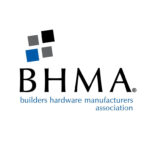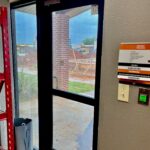In the hardware industry, we have several types of hardware that allow doors to be operated hands-free…automatic operators, wave switches, even something as simple as a hospital pull. But COVID-19 has inspired new “inventions” to help people avoid touching door hardware with their hands, to deter the spread of the virus.
Have you seen anything that looks promising? There are pros and cons to each of the concepts, but maybe there are some good possibilities to be developed. Below are a couple of the ideas that have crossed my desk – a 3D-printer file for an adaptor to add to existing hardware and a stylus that can be used to push buttons and turn levers.
How can the door and hardware industry help reduce the spread of germs?
You need to login or register to bookmark/favorite this content.






I was thinking something along the line of a hygiene hand the other day!!!
There goes my millions.
Neat ideas, I guess the first one still meets ADA??
Hmmm…sort of. Although there are other issues.
– Lori
This “Hygeine Hand” may be good for the individual, but it will be bad for the hardware. It will chip lacquer and scratch hardware.
I agree!
– Lori
I can seen that this might seem to be helpful in theory, although, I don’t see that it makes a difference.
If a sick or non-symptomatic person coughs on their sleeve or elbow and everyone is now using their sleeve or elbow to operate the lever, instead of their hands, how is that less contaminated? Someone would need to invent something the individual could carry with them to operated the lever without touching it with ANY part of their body. That object/tool could then be sterilized regularly and help prevent transmission of the virus.
It seems more practical to just operate the levers, panic bars, etc. with exclusively your right or left hand (perhaps gloved) and then wash/sanitize when you get to where you need to be. If you walk around with the assumption/awareness of contamination on that hand you can avoid touching your face or other surfaces in your home or work space until you have sanitized it.
Okay, so I clearly need to read your post more thoroughly. 🙂
I just watched the second video and realized that someone already invented the personal carry tool.
I would still contend that the safest way to keep personal hygiene is through habits, not gimmicky tools or hardware. Brass may be “antimicrobial” but it doesn’t appear to be instantly or completely effective. (see wiki quote)
So what happens when you stick that thing in your pocket? I think it might be better to just use one hand as your tool and wash both hands regularly.
“The surfaces of copper and its alloys, such as brass and bronze, are antimicrobial. They have an inherent ability to kill a wide range of harmful microbes relatively rapidly – often within two hours or less – and with a high degree of efficiency. These antimicrobial properties have been demonstrated by an extensive body of research. The research also suggests that if touch surfaces are made with copper alloys, the reduced transmission of disease-causing organisms can reduce patient infections in hospital intensive care units (ICU) by as much as 58%.” -Wikipedia
I like the second one. But it needs a “cap” for doesn’t contaminating your pocket or any surface that it touchs
All public and healthcare facilities could reduce covid or any other bacterial or virus by installing copper alloy door hardware on every door. CDC shows copper kills covid after 4 hours there is no viable virus. EPA lists copper for killing bacteria and viruses. Designers, developers, contractors have these tools to make a difference. I think its time we consider this option for all hardware and accessories from door hardware, handrails, grab bars, faucets, toilet flush devices, even electrical switches and plates.
EXCERPTS:
When a virus or bacteria strikes the plate, it’s flooded with copper ions. Those ions penetrate cells and viruses like bullets. The copper doesn’t just kill these pathogens; it destroys them, right down to the nucleic acids, or reproductive blueprints, inside. See Keevil link below.
“There’s no chance of mutation [or evolution] because all the genes are being destroyed,” says Keevil. “That’s one of the real benefits of copper.” In other words, using copper doesn’t come with the risk of, say, over-prescribing antibiotics. It’s just a good idea.
Virus contact with copper produces: rapid inactivation, irreversible destruction of viral RNA, and massive structural damage were observed in coronavirus exposed to copper and copper alloy surfaces. Incorporation of copper alloy surfaces in conjunction with effective cleaning regimens and good clinical practice could help to control transmission of respiratory coronaviruses, including MERS and SARS.
Copper alloy products are expensive: hospital-borne infections are costing the healthcare system as much as $45 billion a year—not to mention killing as many as 90,000 people—the copper upgrade cost is negligible by comparison.
New copper alloys with nickel does not have to look like an old antique horn.
LINKS TO CHECK FACTS:
https://www.researchgate.net/publication/265158098_Doorknobs_A_Source_of_Nosocomial_Infection/link/55bce51a08aed621de1085ed/download
https://www.copperalloystewardship.com/node/14708
https://www.medrxiv.org/content/10.1101/2020.03.09.20033217v1.full.pdf
https://mbio.asm.org/content/6/6/e01697-15
https://www.copper.org/publications/pub_list/pdf/a4103.pdf
https://www.copper.org/applications/antimicrobial/
https://www.copperalloystewardship.com/